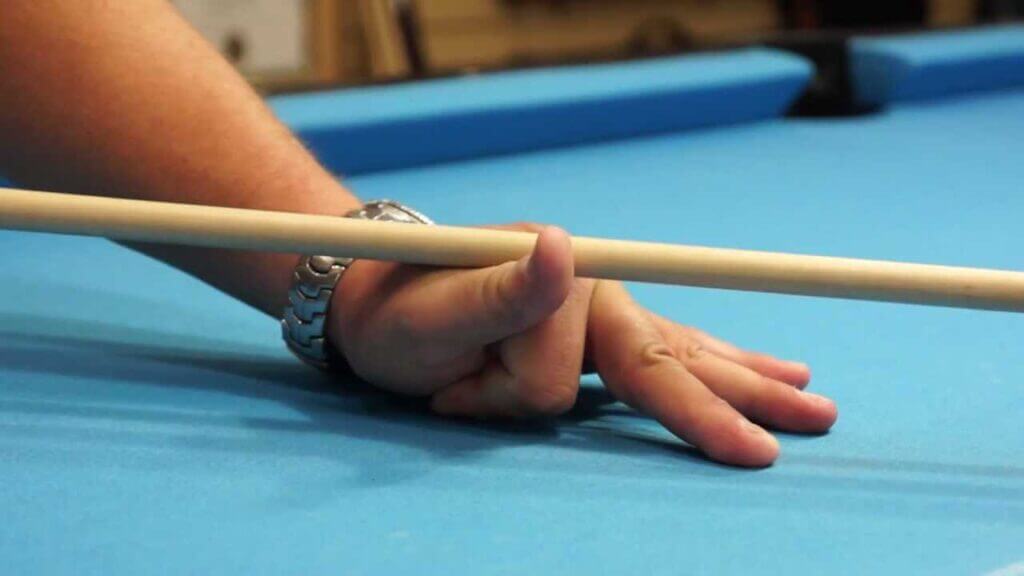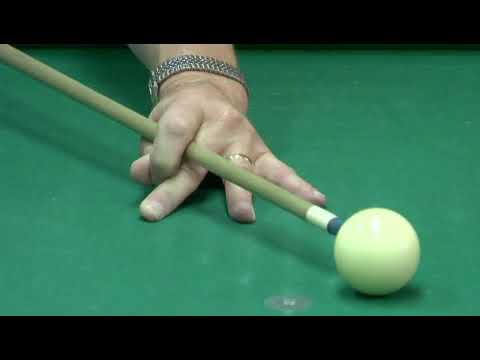In the game of pool, consistency, accuracy, and control are the keys to success. While the pool cue and stroke get most of the attention, an unsung hero of the game is the bridge.
In this guide, we’ll delve into the importance of pool bridges, the different types, and how to master them.
What are Pool Bridges?
A pool bridge is the hand position that supports and guides the pool cue during a shot. The bridge helps maintain stability, provides a path for the cue, and contributes significantly to the precision of your shot.
Types of Pool Bridges
The Closed Bridge
The closed bridge is often used when players need extra control over the cue, especially during power shots. To form a closed bridge, lay your hand flat on the table, curl your index finger around the cue, and let the thumb act as a support. This is also known as the loop bridge.
The Open Bridge

The open bridge is generally easier for beginners to use and provides a clear view of the cue tip. To form an open bridge, place your hand palm-down on the table, spread your fingers for stability, and create a V-shaped groove for the cue with your thumb and index finger.
The Rail Bridge
When your cue ball is near the rail, the rail bridge comes in handy. To form a rail bridge, place your hand on the rail, with your thumb tucked under the index finger, forming a loop for the cue.
The Bridge Stick
Sometimes, the shot’s position on the table makes it impossible to form a stable bridge with your hand. In such cases, a bridge stick is used. It’s essentially an extension of your bridge hand, providing the stability you need for an accurate shot.
How to Form a Pool Bridge
Forming a stable and effective pool bridge is a fundamental skill for all players. Here are the steps to form each type of bridge:
Forming an Open Bridge
- Lay your hand flat on the table, fingers spread apart for stability.
- Lift your knuckles, creating a stable base.
- Rest the cue in the groove formed between your thumb and index finger.
Forming a Closed Bridge

- Start with an open bridge.
- Wrap your index finger around the cue.
- Make sure your thumb is touching the side of your middle finger, forming a loop for the cue to glide through.
Forming a Rail Bridge
- Place your hand on the rail, palm down.
- Form a V shape with your thumb and index finger.
- Rest the cue in this V, using your other fingers for additional stability if needed.
How to Use a Bridge Stick
The bridge stick is used when you can’t reach the cue ball with a normal bridge or when the cue ball is in a difficult position. Here’s how to use it:
- Select the appropriate bridge head: Bridge sticks come with different heads for different situations. Choose the one that suits your shot.
- Position the bridge stick: Place the bridge stick on the table, ensuring it’s stable before you attempt your shot.
- Execute your shot: Once your bridge stick is stable, execute your shot just as you would with a regular bridge.
Common Mistakes in Using Pool Bridges and How to Avoid Them
The most common mistake players make when forming a pool bridge is not providing enough stability. Ensure your bridge is firmly planted on the table, providing a secure guide for your cue. Another common error is gripping the cue too tightly in a closed bridge, which can restrict movement and reduce accuracy.
Practicing Your Pool Bridges
Improving your pool bridge technique can dramatically improve your game. Here are some tips:
Practice each type of bridge: Spend time practicing forming and shooting with each type of bridge. This will make it easier to use the right bridge in game situations.
Use a mirror: Practice your bridge in front of a mirror to check your form.
Incorporate bridge practice into your drills: Don’t just practice shots; deliberately practice forming and using your bridge.
FAQs on Pool Bridges
What is the best bridge to use in pool?
The best bridge to use in pool depends on the situation. Open bridges are typically easier for beginners and provide a clear view of the cue tip, while closed bridges offer more control for power shots. Rail bridges are helpful when the cue ball is near the rail.
What are the most common pool bridges?
The most common pool bridges are the open bridge and the closed bridge. The rail bridge and the use of a bridge stick are also common, especially in situations where a shot is difficult to reach.
What is the easiest pool bridge?
The open bridge is typically the easiest for beginners to learn. It provides a clear view of the cue and the shot, and it’s simpler to form than a closed bridge.
What bridge do professional pool players use?
Professional pool players use all types of bridges, depending on the shot. They often use a closed bridge for shots that require more control and an open bridge for other shots.
Why do pool players use a closed bridge?
Pool players use a closed bridge when they need more control over the cue, especially during power shots. The closed bridge offers a firmer grip on the cue, helping to prevent unwanted lateral movement during the stroke.
Conclusion
Mastering pool bridges is a crucial aspect of improving your pool game. Remember, the best bridge is the one that suits the shot you’re taking. So, practice forming and using each type of bridge, and soon, you’ll find your game improving dramatically. Keep practicing, stay focused, and your bridge will become a powerful tool in your pool arsenal.


